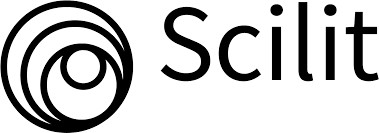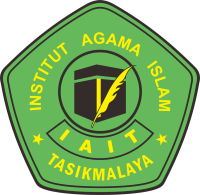Intertextuality of the Symbolism of Mountain Destruction in the Qur'an and the Bible
DOI:
https://doi.org/10.61166/tilawah.v1i3.18Keywords:
Intertextuality, The Destruction of the Mountain, The Qur'an, The BibleAbstract
This study discusses the phenomenon of mountain destruction from the perspective of two Abrahamic holy books, namely the Qur'an and the Bible. The narratives of both books explain that the destruction of mountains on the last day of time is a powerful symbol in describing cosmic events on the Day of Judgment. The destruction of mountains in the Qur'an is described in detail and visually, such as dust, flying feathers, and mirages. Meanwhile, in the Bible, the destruction of mountains tends to be symbolic, indicating God's wrath. The methodology used is a literature review with a qualitative, chronological, descriptive, and analytical approach, with primary sources from sacred texts and relevant literature. Kristeva emphasizes that texts are interconnected and form shared meaning. The results of the research indicate that both books, regarding the destruction of mountains, are not merely physical visualizations. However, the destruction of mountains carries meaning as a symbol of God's power and as a sign or reminder for all humanity.
References
Abdurrachman, Agra, H., & Parmin. (2022). Kajian Intertekstual Julia Kristeva: Hubungan Intertekstual Syair Utawen Pesantren Gebang Tinatar Dengan Serat Wirid Hidajat Djati Karya Raden Ngabehi Ranggawarsita. Bapala, 9, no. 01, 1–14.
Al-Qur’an, L. P. Q. (2011). Al-Qur’an Dan Tafsirnya (4th ed.; pentashih Qur’an, ed.). Jakarta: Kementrian Agama.
AlMa’tiah, Q. S., & Haq, Z. (2022). The concept of Messiah in abrahamic religions: A focused study of the eschatology of Sunni islam. Heliyon, 8, 2.
Atabik, A. (2015). KONSEP PENCIPTAAN ALAM: Studi Komparatif-Normatif antar Agama-Agama. FIKRAH: Jurnal Ilmu Aqidah Dan Studi Keagamaan, 3, No.
Baiquni, A. (1994). Al-Qur’an, Ilmu Pengetahuan Dan Teknologi. Yogyakarta: Dana Bhakti Wakaf.
Hakh, S. (2020). KITAB WAHYU Menafsir dan Memberitakan Penyertaan Allah dalam Perjuangan Iman Umat (1st ed.; Rika, ed.). Jakarta: PT BPK Gunung Mulia.
Hayati, M. S., Sofia, A., Zikri, A., & Siddiq, T. (2022). The Interpretation of Ahlul Bait on Tafsir al-Misbah: The Julia Kristeva Intertextuality Perspectives. Mashdar : Jurnal Studi Al-Quran Dan Hadis, 4, no.2, 260.
Kaelan. (2017). Filsafat Bahasa Semiotika dan Hermeneutika. Yogyakarta: Pradigma.
Kementerian Agama. (2019). Al-Qur’an dan Terjemahannya Edisi Penyempurnaan (Penyempurn). Jakarta: Lajnah Pentashihan Mushaf Al-Qur‟an Badan Litbang dan Diklat Kementerian Agama RI.
Khikmatir, A. (2019). Kisah Nabi Nuh Dalam Al-Qur’an (Pendekatan Intertekstual Julia Kristeva). Jurnal At-Tibyan: Jurnal Ilmu Alqur’an Dan Tafsir, 4. no.2, 209–226.
NAHUM. (n.d.).
Novita, I. I. (2022). Konsep Israf Dalam Perspektif Al Quran Dan Relevansinya Dengan Fenomena Flexing (Studi Komparatif Tafsir Al-Azhar Dan Al-Misbah). IAIN Kediri.
Nur Iman, F. (2020). Relationship of the Quran and Other Religious Scriptures: Studies on Al-Muhaymin in Q.s. Al-Mâidah 48. Ulul Albab: Jurnal Studi Islam, 21(1), 86–103.
Rahayu, A. D. A. P. L. M. (2015). Analisis Intertekstual Motif Cerita Memoirs of a Geisha Karya Arthur Golden Dan Primadona Karya Nano Riantiarno and Nano Riantiarno’s Primadona). Salingka, 12, no. 01, 27–36.
Ridha, M. R. (2011). Tafsir Al-Qur’an Al-Karim (Al Manar) (6th ed.). Beirut, Lebanon: Dar Kitab al-’Alamiyah.
Rohmaniyah, I., Sofyan, & Ilham Muhammad. (2023). Reconstructing Intertextuality of the Qur’an from an Orientalist Perspective (Angelika Neuwirth Intertextuality Analysis Study). MINARET JOURNAL OF RELIGIOUS STUDIES, 1, no 2, 12.
Sayfi’i, I. (2000). Konsep Ilmu Pengetahuan dalam Al-Qur’an. Yogyakarta: UII Press.
Tinambuhan, L., Handriani, R., Yulianingsih, R., Sarmauli, & Mirianto, R. (2024). Eskatologi dalam Perspektif Alkitabiah: Pemahaman tentang akhir zaman dan kedatangan-Nya yang kedua kali. Journal of Creative Student Research, 2, no, 1.
https://alkitab.sabda.org/verse.php?book=Mzm&chapter=46&verse=2https://alkitab.sabda.org/verse.php?book=Mzm&chapter=46&verse=2. Diakses pada tanggal 17 Juni 2025.
https://alkitab.me/in-tb/Yesaya/40/4. Diakses pada tanggal 17 Juni 2025.
https://alkitab.me/in-tb/Yoel/3/16. Diakses pada tanggal 17 Juni 2025.
Downloads
Published
How to Cite
Issue
Section
License
Copyright (c) 2025 Binti Khabibatur

This work is licensed under a Creative Commons Attribution 4.0 International License.










